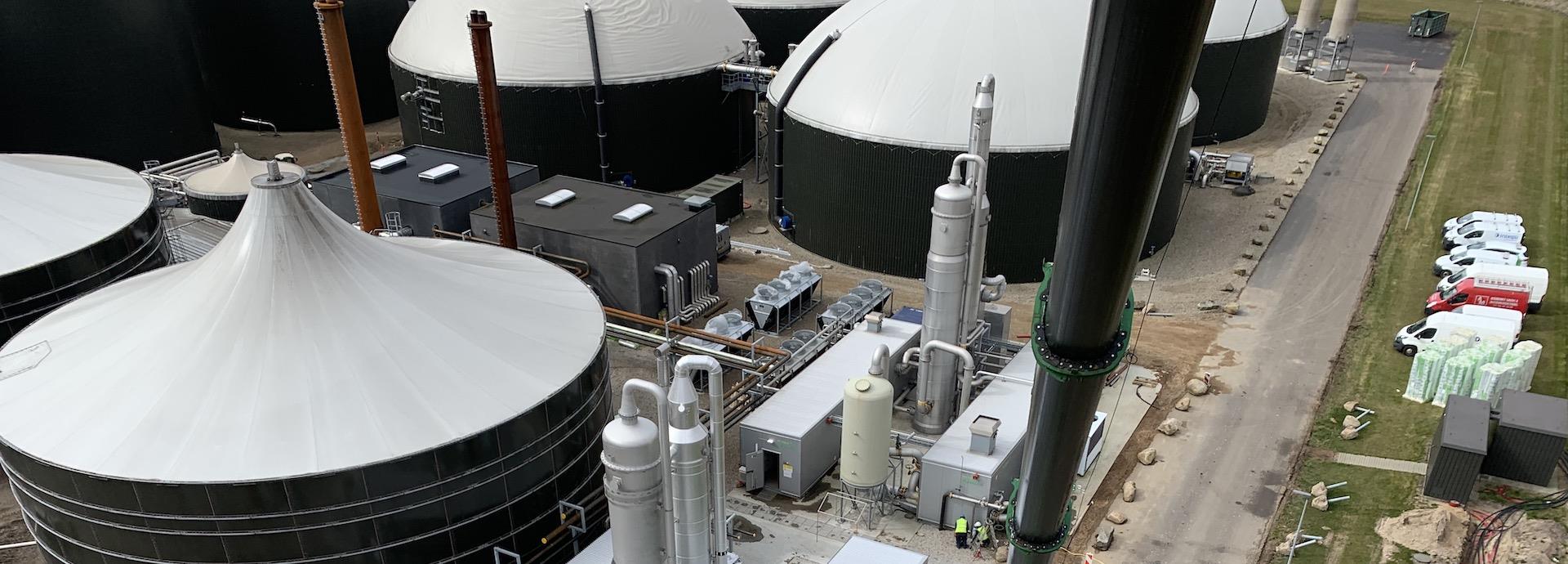

Could methane provide the catalyst for a 100% renewable energy future? Biomethane is the new kid on the renewable energy block, but it is ready to come of age and offers real solutions to our future fuel needs.
There are many potential sources of renewable energy, but one is often overlooked. In fact, we can’t even see it: microorganisms. Microbes can help us create clean, renewable energy in a process called biomethanation.
“Biomethanation is biological methane production. It is a natural process carried out by natural organisms known as methanogens,” explains Anni Alitalo, R&D Director at Q Power.
Methane is a gas that is formed mostly by biological processes, such as the breakup of organic matter in anoxic soil environments or from the digestive process of cows. It is the main constituent of natural gas and produces less carbon dioxide than other hydrocarbon fuels for each unit of heat released. Unlike other fuels, and depending upon the engine, burning methane results in less nitrous oxide, sulphur dioxide, or particulate emissions. It becomes even more attractive when it is produced sustainably.
Carbon neutral or carbon negative energy
Methane can be produced from carbon dioxide and hydrogen. Q Power is a start-up that uses renewable energy to produce hydrogen from water using electrolysis. The company obtains carbon dioxide from various sources, for example, an anaerobic digester, which uses microorganisms to break down organic material and produce biogas. In September 2019, Wärtsilä and Q Power signed a cooperation deal designed to accelerate the development and commercialisation of renewable fuels.
The anaerobic digester can use a variety of organic material to create methane and carbon dioxide, such as waste from the forestry, food, or agriculture industries. Carbon dioxide that would have been released into the atmosphere is instead used to create fuel. Q Power combines the hydrogen and carbon dioxide to produce synthetic methane.
“The big advantage of using methane as fuel is the reduction of CO2 compared to using traditional liquid fossil fuels,” says Reetta Kaila, Technology & Development Manager, Renewable Gases at Wärtsilä. “According to a greenhouse gas emission study by a third party, Thinkstep, last year, using LNG can reduce CO2 emissions from 12 to 15%, depending upon the engine, but using biomethane can actually be a net negative CO2 process, depending upon the source of the biomass.”
Wärtsilä partners with Q Power
This is an example of the Power-to-X process, where renewable energy is converted into a form which can be used later. In this case, power is ultimately transformed into synthetic methane gas. Wärtsilä believes the Power-to-X process is a key to a sustainable future when there is an excess of renewable energy available.
“Wärtsilä is the global leader in marine and energy technology, and both of our companies see a 100% renewable energy future,” Alitalo explains.
The first step of the partnership between Wärtsilä and Q Power is a demonstration of the process. There are plans to take a small, mobile plant to the Finnish pavilion at the Expo in Dubai to show how Q Power’s biological methanation process works and the benefits of synthetic methane.
There are other ways to create methane, such as catalyst technologies, but currently some of these methods need high pressure and high temperatures. Q Power has a different approach.
“By using microorganisms in our unique bio-reactors we can do the process using low temperatures and no pressure,” Alitalo says. “In addition, we don’t need to mix or constantly pump fluid. Our technology solves the problem of needing lots of energy to create biomethane.”
Current challenges: cost and scale
A major benefit of bio- or synthetic methane is that it doesn’t require extensive new infrastructure, although the focus is more on how to collect the necessary feedstock. The world already uses LNG for energy generation and transport, and bio-LNG, liquefied biomethane and liquefied synthetic methane can replace LNG with no changes to existing systems.
“Biogas has the same methane molecule as LNG and, in fact, is a better-quality fuel,” says Kaila. “It can be used in an LNG engine on a ship or a power plant. Liquefied biomethane or synthetic methane is 99,99% methane, with only 50 ppm of CO2. Thus, the methane number is high and it will not cause knocking issues. With fossil LNG that has heavier hydrocarbons and a methane number ranging from below 70 to almost 100, there is a risk that one cannot always operate on full load.”
Biomethane sounds like the holy grail, but it does have issues that need to be addressed. First, it needs raw material, but biogas plants could be built close to major forestry, food, or agriculture centres where they could source biomass such as residues. The biggest challenge currently is cost. Biomethane can cost several times as much as natural gas. However, as biogas plants scale up production, costs are expected to come down in the same way as wind and solar power. Even more importantly, if the costs of carbon emissions are included in the price of fossil fuels, then biomethane begins to look much more attractive.
“We’re very excited about Q Power’s technology and are happy to be partnering with them,” Kaila says. “We only have a small carbon budget left to keep the global temperature increase to 1.5 degrees, and serious decisions need to be made today. We believe biomethane can play a huge role in fuelling the energy and maritime sectors.”